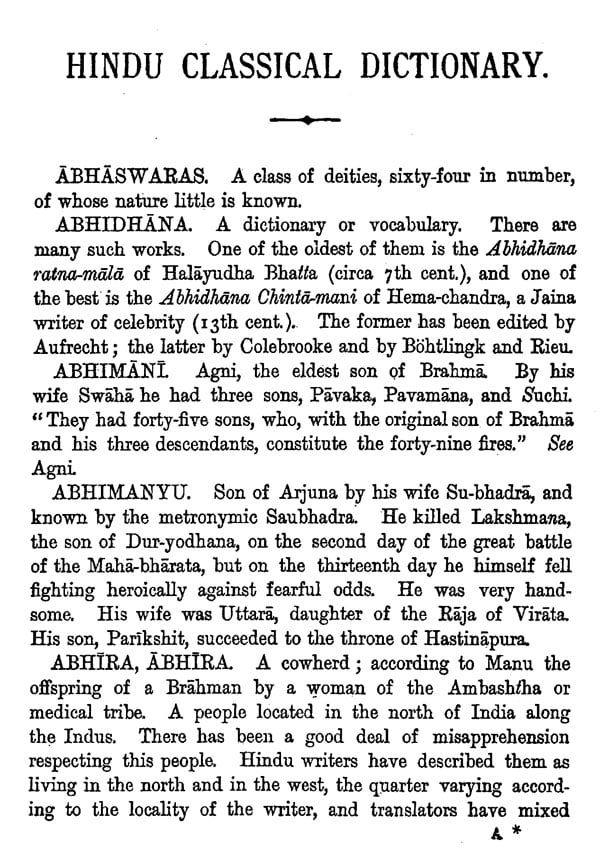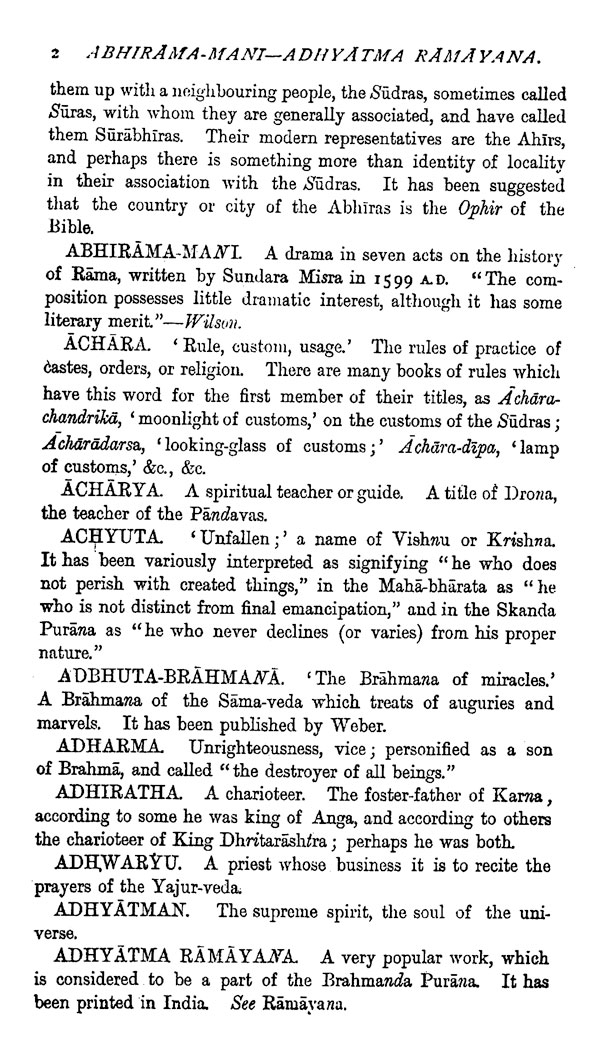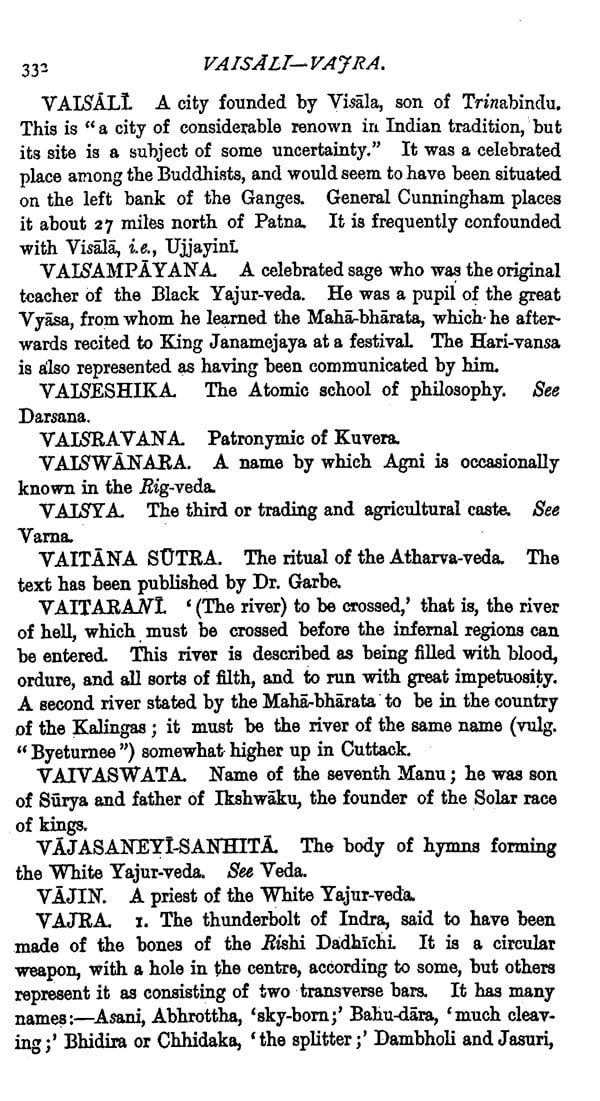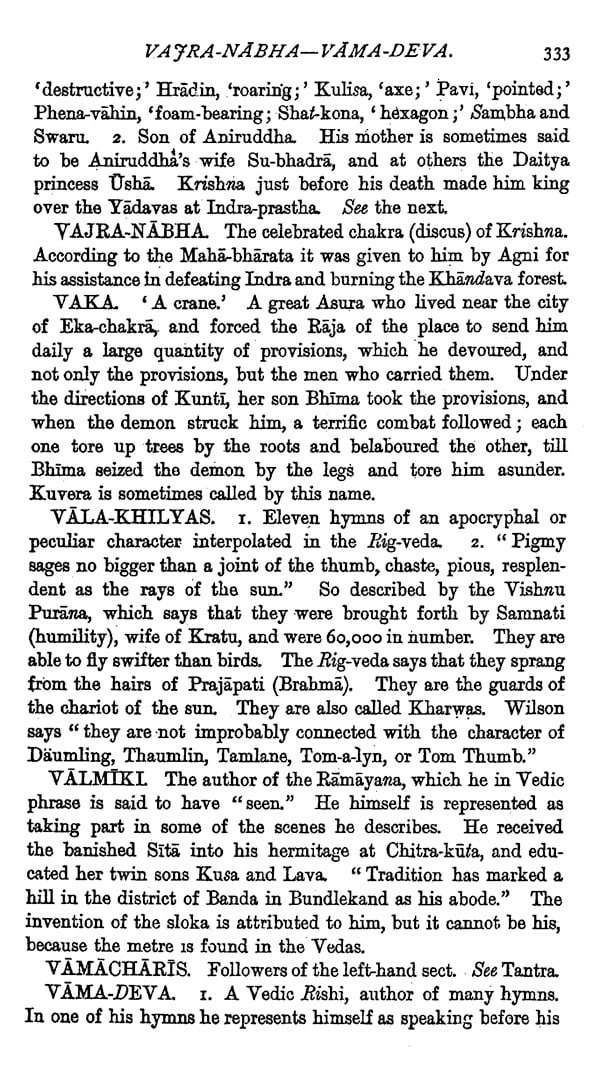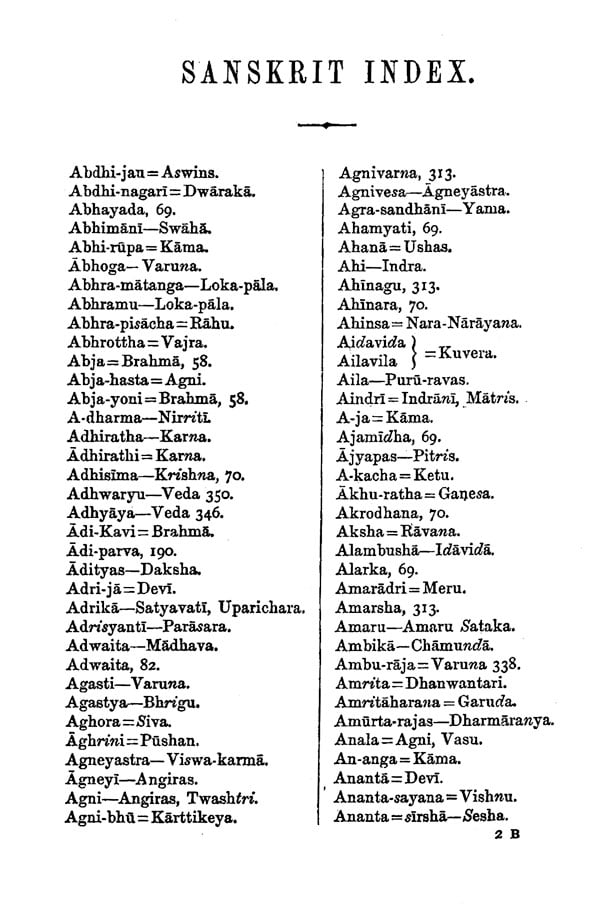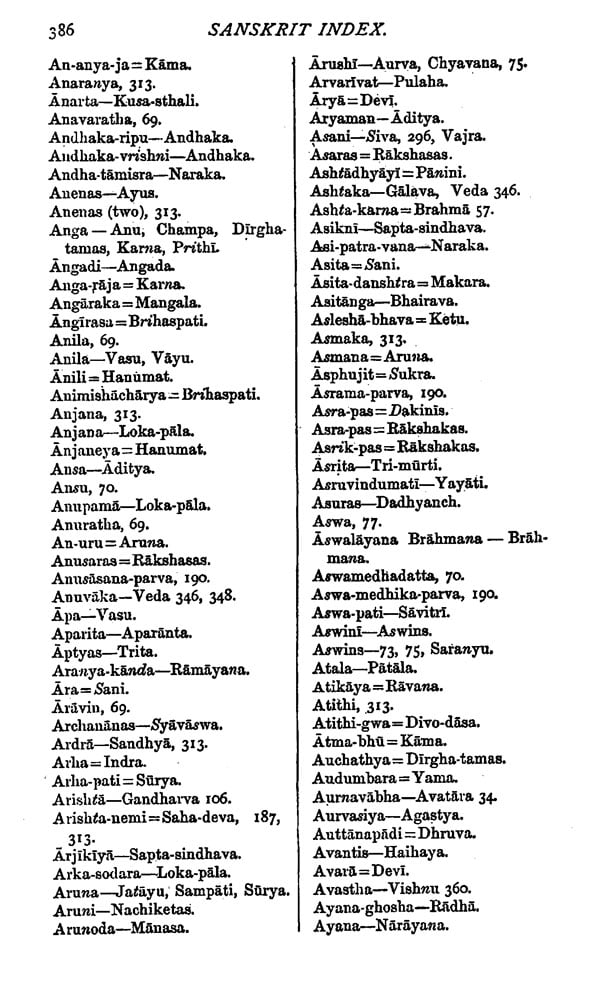
A Classical Dictionary of Hindu Mythology and Religion, Geography, History, and Literature
Book Specification
| Item Code: | NAZ847 |
| Author: | John Dowson |
| Publisher: | Manohar Publishers and Distributors |
| Language: | English |
| Edition: | 2023 |
| ISBN: | 9789390035199 |
| Pages: | 424 |
| Cover: | HARDCOVER |
| Other Details | 8.80 X 5.80 inch |
| Weight | 580 gm |
Book Description
A Classical Dictionary of Hindu Mythology and Religion, Geography, History and Literature, published originally in 1879, contains short sketches of Hindu pantheons, characters from the Indian scriptures, Hindu mythology, places, people, history, literature and manners and customs of the time. It remains one of the most comprehensive and authoritative works on Hinduism.
John Dowson (1820-81) was a British Indologist and a noted scholar of Hinduism.
IN this work an endeavour has been made to supply the long-felt want of a Hindu Classical Dictionary. The late Professor Wilson projected such a work, and forty years ago announced his intention of preparing one for the Oriental Translation Fund, but he never accomplished his design. This is not the first attempt to supply the void. Mr. Garrett, Director of Public Instruction in Mysore, published in India a few years ago a " Classical Dictionary of India," but it is of a very miscellaneous character, and embraces a good deal of matter relating to the manners and customs of the present time. It has not obtained favour in Europe, and it cannot be considered as any obstacle in the way of a more complete and systematic work.
The main portion of this work consists of mythology, but religion is bound up with mythology, and in many points the two are quite inseparable. Of history, in the true sense, Sanskrit possesses nothing, or next to nothing, but what little has been discovered here finds its place. The chief geographical names of the old writers also have received notice, and their localities and identifications are described so far as present knowledge extends. Lastly, short descriptions have been given of the most frequently mentioned Sanskrit books, but only of such books as are likely to be found named in the works of European writers.
THE Aryan settlers on the banks of the Indus and in the land of the Five Rivers were poisessors of a large number of hymns addressed to the elements and powers of nature. Some of these hymns they no doubt brought from their earlier homes to the West, but others were composed after they had reached the land. of their adoption. These ancient hymns cover a long period, the length and the era of which can only be conjectured, but fifteen hundred years before Christ is about the mean of the various ages assigned to them. The hymns form what is called the Rig-veda Sanhiti, a collection which embraces all the extant compositions of the early Aryans. It is the Rig-veda which is of primary importance in Hindu religion and mytho-logy; the other Vedas are later in date, and the second and third Vedas consist almost exclusively of hymns derived from the Rig, but specially arranged for religious purposes. The fourth or Atharva-veda borrows less from the .Rig-veda, but it is considerably later in date, and is of a different character.
The Aryan hymns of the Veda embody the ideas of the Indian immigrants. These ideas were inherited from their forefathers. They were originally the property of the united progenitors of the Aryan races, and the offshoots of this great human stock have spread their primitive ideas over a large portion of the earth. In the Vedic hymns the ideas and myths appear in their simplest and freshest forms, directly connected with the sources from which they sprang by clear ties of language. Comparative philology and mythology go hand in hand; and as the language of the Vedas has proved the great critical instrument in the construction of the science of philology, so the simple myths of the Vedic hymns furnish many clues for un-ravelling the science of mythology. For where the etymology of a mythic name or term yields a distinct sense of its meaning, the origin of the myth is not far to seek. The language of the Vedas has in many instances supplied this clue, and led to a definite comprehension of what was previously hidden and obscure. The Vedic hymns have preserved the myths in their primitive forms, and, says Max Milner, " Nowhere is the wide distance which separates the ancient poems of India from the most ancient literature of Greece more clearly felt than when we compare the growing myths of the Veda with the full-grown and decayed myths on which the poetry of Homer is founded. The Veda is the real Theogony of the Aryan races, while that of Hesiod is a distorted caricature of the original image."
Book’s Content and Sample Pages
